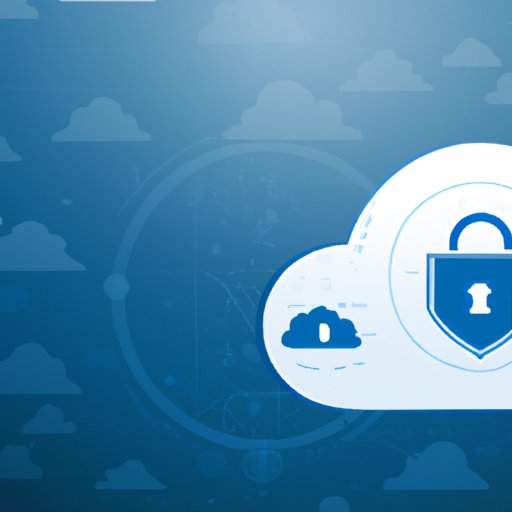Introduction
Cybersecurity is a term used to describe the practice of protecting networks, systems, and programs from digital attacks. It includes the prevention of unauthorized access to data and the safeguarding of information and computer systems from damage or theft. Cybersecurity is becoming increasingly important as our lives become more connected and digital technologies evolve and expand.

Exploring Different Types of Cybersecurity
There are several different types of cybersecurity that organizations must consider when developing their security strategies. These include network security, application security, identity and access management, data protection, and cloud security.
Network Security
Network security is the process of securing an organization’s network from malicious threats. This includes firewalls, intrusion prevention systems, and antivirus software. Network security also involves monitoring traffic within the network to identify any suspicious activity.
Application Security
Application security encompasses measures taken to protect applications from malicious attacks. This includes secure coding practices, authentication protocols, and input validation. Application security is especially important when dealing with web-based applications.
Identity and Access Management
Identity and access management (IAM) refers to the processes and technologies used to manage user identities and control access to resources. IAM solutions typically include user provisioning, authentication, and authorization features.
Data Protection
Data protection is the process of ensuring that data is securely stored and accessed. This includes encryption, access control, and backup and disaster recovery. Data protection is essential for protecting sensitive information from unauthorized access.
Cloud Security
Cloud security focuses on protecting data stored in the cloud. This includes encryption, authentication, and access control. Cloud security is becoming increasingly important as organizations move more of their data and applications to the cloud.
What is Cybersecurity and How Does it Protect Us?
Cybersecurity is a broad term that encompasses many different components and technologies. At its core, it is the practice of protecting networks, systems, and programs from digital attacks. However, it also involves understanding the basics of cybersecurity and developing an effective strategy to protect sensitive information.
Overview of the Different Components of Cybersecurity
The different components of cybersecurity include network security, application security, identity and access management, data protection, and cloud security. Each of these components works together to protect organizations from potential threats. For example, network security monitors traffic within the network while data protection ensures that data is securely stored and accessed.
Understanding the Basics of Cybersecurity
In order to effectively protect an organization from cyber threats, it is important to understand the basics of cybersecurity. This includes understanding the different components of cybersecurity and the risks associated with each. Additionally, organizations should be aware of the latest trends and developments in the field.
Developing an Effective Cybersecurity Strategy
Once an organization has a basic understanding of cybersecurity, they can begin to develop an effective strategy to protect their network, systems, and data. This includes developing policies and procedures for data handling, implementing the appropriate security technologies, and regularly testing and assessing their security posture.
The Importance of Cybersecurity for Businesses
Cybersecurity is essential for businesses of all sizes. Not only does it help protect sensitive information from unauthorized access, but it also helps prevent disruptions to operations and enhances compliance with regulatory requirements.
Protecting Sensitive Information
Businesses have a responsibility to protect their customers’ data. This includes ensuring that data is securely stored and accessed, and implementing the necessary controls to prevent unauthorized access. Cybersecurity solutions such as encryption, authentication, and access control can help protect sensitive information.
Preventing Unauthorized Access
Unauthorized access to a business’s network and systems can lead to serious consequences, including data breaches and loss of revenue. Cybersecurity solutions such as firewalls, intrusion prevention systems, and antivirus software help prevent unauthorized access.
Enhancing Compliance with Regulatory Requirements
Many organizations are subject to various regulations, such as HIPAA and PCI DSS. Cybersecurity solutions help organizations meet these regulatory requirements by ensuring that their networks and systems are secure.
Conclusion
Cybersecurity is an essential part of any organization’s security strategy. It helps protect sensitive information from unauthorized access, prevents disruptions to operations, and enhances compliance with regulatory requirements. By understanding the different components of cybersecurity and developing an effective strategy, organizations can protect their networks, systems, and data.
(Note: Is this article not meeting your expectations? Do you have knowledge or insights to share? Unlock new opportunities and expand your reach by joining our authors team. Click Registration to join us and share your expertise with our readers.)
